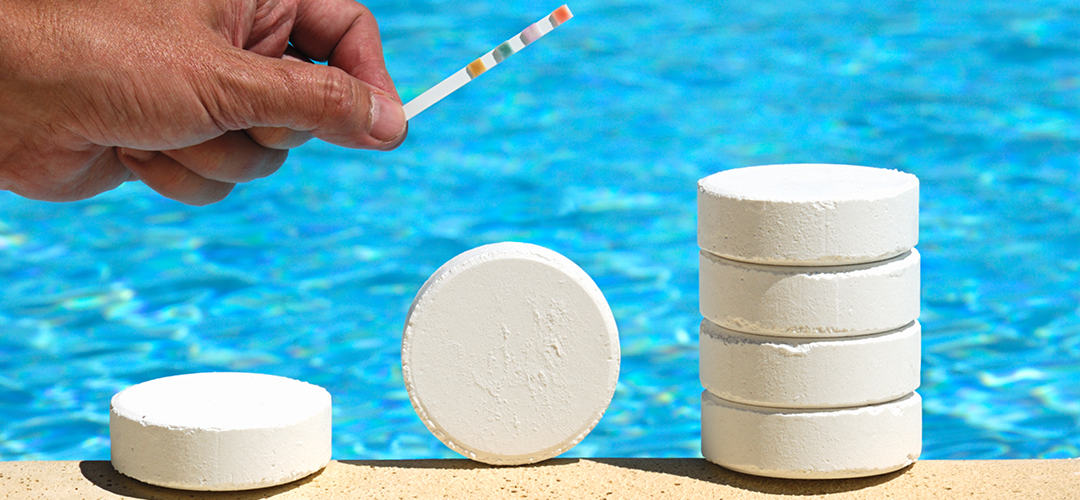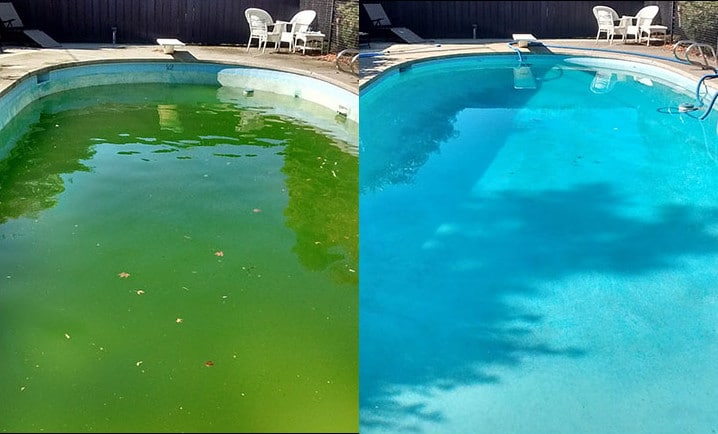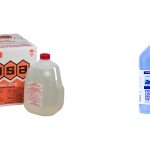Pool shock is a chemical compound used to disinfect and sanitize pool water by killing harmful bacteria and algae. It is an essential part of pool maintenance to ensure clean and safe water for swimming.

Credit: www.swimmingpool.com
The Importance Of Pool Shock
Pool shock plays a vital role in maintaining the cleanliness and health of your pool. By using pool shock, you can effectively sanitize the water, prevent the growth of algae and bacteria, and ensure a clean and safe swimming environment for you and your family. Understanding the importance of pool shock can help you make informed decisions about the maintenance of your pool.
Effective Water Sanitization
Pool shock is essential for maintaining clean and healthy water in your pool. It effectively kills bacteria and other harmful microorganisms, ensuring that the water remains safe for swimming. Regular shock treatments can help maintain the proper chemical balance in the water, preventing the growth of harmful pathogens and ensuring a sanitary swimming environment.
Prevention Of Algae And Bacteria Growth
One of the primary functions of pool shock is to prevent the growth of algae and bacteria in the water. By adding shock to the pool, you can eliminate existing algae and bacteria and prevent new growth. This helps maintain the clarity and quality of the water, reducing the risk of infections and illnesses caused by harmful microorganisms.
Credit: intheswim.com
How Does Pool Shock Work?
Oxidation Process
When pool shock is added to a pool, it initiates a powerful oxidation process. This process rapidly breaks down and eliminates organic contaminants, such as bacteria, algae, and other harmful substances. The oxidizing action of pool shock effectively purifies the water, leaving it crystal clear and safe for swimming.
Chlorine Level Boost
Pool shock plays a crucial role in boosting the chlorine levels in the pool. By adding chlorine to the water, pool shock ensures that the sanitary conditions are maintained, effectively preventing the growth of harmful microorganisms. Moreover, the chlorine level boost provided by pool shock helps to establish a consistent and balanced chlorine level, ensuring optimal water quality.
Types Of Pool Shock
Pool shock comes in different types, each serving a specific purpose. Whether you need to eliminate algae, sanitize the water, or clarify it, there is a pool shock option available to meet your needs.
Calcium Hypochlorite
Calcium Hypochlorite is a strong pool shock that effectively sanitizes pool water.
- Comes in powder or granular form
- High chlorine concentration
- Rapidly dissolves in water
- Helps eliminate bacteria and algae
Sodium Di-chlor
Sodium Di-chlor is a popular pool shock known for its stability and ease of use.
- Granular form, dissolves quickly
- Gentler on pool surfaces
- Stabilized chlorine for continuous sanitation
- Effective against organic contaminants
Pool shock treatments like Calcium Hypochlorite and Sodium Di-chlor play key roles in maintaining clean and safe swimming pools.

Credit: iopool.com
When And How To Use Pool Shock
Pool shock is an essential component in the maintenance of a clean and clear swimming pool. It helps to eliminate bacteria, algae, and other contaminants that can accumulate over time. How much shock add the pool? However, knowing when and how to use pool shock can sometimes be confusing for pool owners. In this article, we will discuss the importance of incorporating pool shock into your regular maintenance schedule, as well as the proper dosage and application methods.
Regular Maintenance Schedule
Maintaining a regular maintenance schedule for your swimming pool is crucial to ensure it stays safe and hygienic for swimmers. One key aspect of this schedule should be the regular use of pool shock. The frequency at which you should shock your pool depends on several factors, such as weather conditions, pool usage, and water quality. As a general guideline, it is recommended to shock your pool every one to two weeks during the swimming season. This helps to prevent the buildup of harmful contaminants and maintain sparkling, crystal-clear water.
Dosage And Application Methods
When it comes to using pool shock, it is important to follow the manufacturer’s instructions for the specific product you are using. The dosage of pool shock varies depending on the size of your pool and its current condition. A common dosage guideline is to add 1 pound of shock per 10,000 gallons of water. However, it is always best to refer to the product label for accurate instructions.
There are several application methods you can choose from when using pool shock. One common method is to pre-dissolve the shock in a bucket of water before adding it to the pool. This helps to evenly distribute the shock and prevent it from settling at the bottom. When pre-dissolving, follow the recommended dosage for the amount of water used. Once dissolved, slowly pour the mixture into the pool while circulating the water with your pool pump or by brushing the walls and floor.
Alternatively, you can also use a pool shock that is specifically designed for direct application. These shock products can be added directly to the pool without pre-dissolving. Simply sprinkle the shock evenly across the water surface, making sure to avoid contact with eyes and skin. Be cautious when using this method as adding shock directly to the pool can cause cloudiness or bleach certain surfaces.
It is important to note that after adding pool shock, you should wait for the chlorine levels to return to a safe range before swimming. Regularly test the water using a pool testing kit to ensure the chlorine level is within the recommended range (usually between 1-3 parts per million) before allowing anyone to enter the pool.
In Conclusion
In summary, incorporating pool shock into your regular maintenance schedule is essential for maintaining a clean and clear swimming pool. By following the proper dosage and application methods, you can effectively eliminate bacteria, algae, and other contaminants from your pool water. Remember to regularly test the water, follow the manufacturer’s instructions, and wait for the chlorine levels to return to normal before swimming. With these simple steps, you can enjoy a safe and refreshing swimming experience all season long.
Safety Precautions While Using Pool Shock
Protective Gear
When handling pool shock, it’s crucial to prioritize safety. Always wear protective gear, such as gloves, goggles, and a mask to shield your skin and eyes from potential hazards. Pool shock contains strong chemicals that can cause irritation, burns, or other adverse effects if direct contact occurs.
Storage And Handling Tips
Prior to storage, ensure the pool shock is kept in a cool, dry place, away from direct sunlight and moisture. It’s essential to store the product out of reach of children and pets in a well-ventilated area to minimize the risk of accidental exposure. When handling pool shock, be diligent about following the manufacturer’s guidelines for proper usage and dosage.
Troubleshooting Common Pool Shock Concerns
Pool shock is an essential maintenance task that helps keep your pool clean and clear. It effectively eliminates bacteria, algae, and other contaminants, leaving you with a safe and inviting swimming environment. Make sure to follow proper dosage instructions and take necessary precautions while handling pool shock chemicals.
Persistent Cloudy Water
Cloudy water after shocking your pool can be frustrating. Continue running the pump and filter until the water clears up.
Chlorine Smell Issues
If you notice a strong chlorine smell, test the water to ensure the free chlorine level is within the recommended range.
Remember to also check the pH levels and adjust them if needed to prevent chlorine odors.
Alternative Pool Sanitization Methods
Alternative pool sanitization methods offer options for pool owners who want to explore different ways to keep their pools clean and safe for swimmers. These methods can provide effective alternatives to traditional pool shocks, giving you more flexibility in managing your pool maintenance. Let’s explore some of these alternative pool sanitization methods.
Saltwater Systems
Saltwater systems use a generator to convert salt into chlorine. By utilizing a process called electrolysis, chlorine is produced and continually added to the pool water. This method provides a more natural and balanced chlorine level and reduces the need for regular shock treatments. Saltwater systems offer a gentler, more sustainable approach to pool sanitization, making them a popular alternative to traditional pool shocks.
Ozone Generators
Ozone generators work by producing ozone, a powerful oxidizer, to sanitize pool water. This process effectively eliminates bacteria, viruses, and other contaminants, providing a chemical-free alternative to chlorine-based shock treatments. Ozone generators can maintain water quality, reduce chemical dependency, and minimize irritation or odor associated with traditional pool shocks. This method can be a beneficial option for those seeking a more environmentally friendly pool sanitization solution.
Conclusion
Pool shock effectively cleans and disinfects your swimming pool, maintaining water clarity and hygiene. Regular use is crucial for a safe and enjoyable swimming experience. Understanding how pool shock works ensures proper maintenance and a clean pool environment for you and your family.





